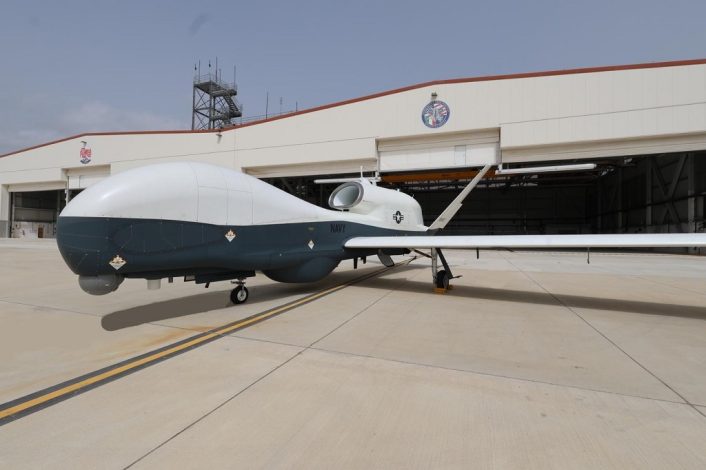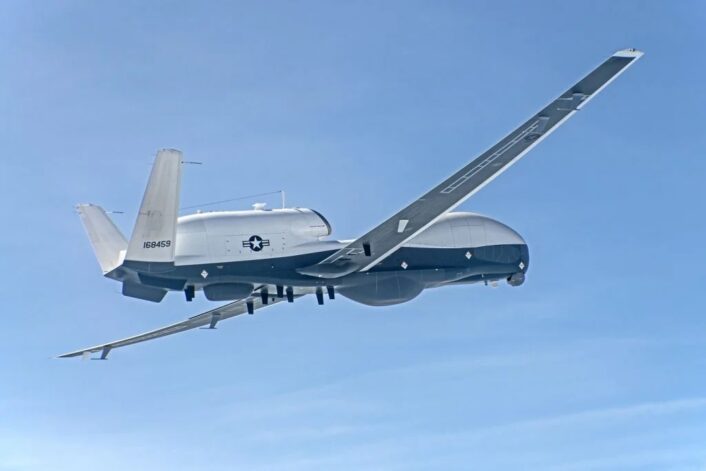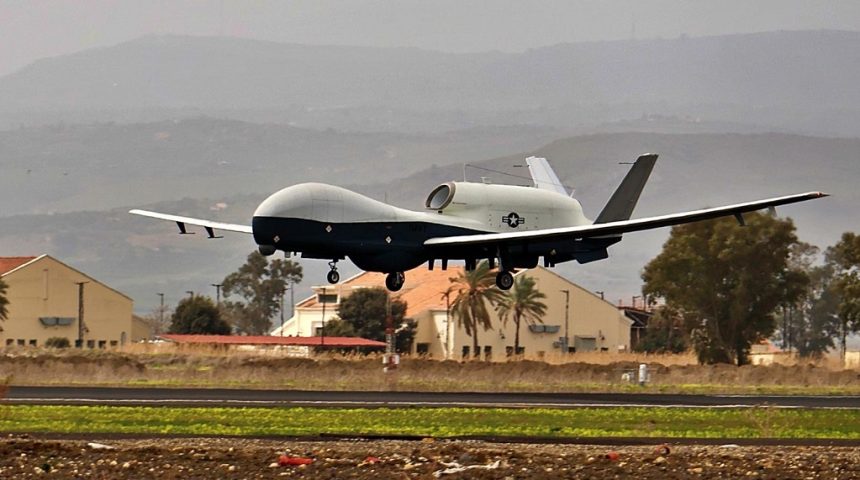The MQ-4C’s arrival to the U.S. Sixth Fleet area of operations marks the second forward-deployed detachment for VUP-19.
The U.S. Navy announced the arrival of the first MQ-4C Triton Unmanned Aerial System at Naval Air Station Sigonella, Italy. The aircraft is assigned to Unmanned Patrol Squadron (VUP) 19 “Big Red,” homeported in Florida at Naval Air Station Jacksonville and Naval Station Mayport, Florida, and is the first to be forward deployed to the U.S. Sixth Fleet area of operations.
The arrival of the MQ-4C marks the second forward deployed detachment for VUP-19, after the first one at Andersen Air Force Base last year. VUP-19 is the first and only unmanned patrol squadron of the U.S. Navy and will have a total of three detachments when fully operational, employing more than 300 Sailors and officers from various aviation ratings and officer communities to maintain and operate the Triton around the world.
“The addition of the MQ-4C Triton, right here in Sigonella, is another milestone in the successful development of the Triton program,” said Capt. Aaron Shoemaker, Commanding Officer, NAS Sigonella. “We are proud to support VUP-19 [Unmanned Patrol Squadron (VUP) 19] as they integrate with the Fleet to expand the roles of unmanned aircraft systems operations in our region and beyond.”
Naval Air Station Sigonella also hosts rotational detachments of the P-8 Poseidon and the MQ-4C will augment their ability to provide broad area, intelligence, surveillance, reconnaissance and targeting capabilities. To prepare for the arrival of the Triton in Italy, VUP-19 “Big Red” held a ceremony to celebrate the deployment and the opening of a new Triton hangar at NAS Sigonella, March 2.
“This ceremony demonstrates Naval Aviation’s continuing efforts to develop new concepts and technologies, and integrate them efficiently into the Fleet,” said in that occasion Vice Adm. Daniel “Undra” Cheever, Commander, Naval Air Forces. “The MQ-4C Triton will be an essential platform for the future of maritime patrol and reconnaissance, with advanced warfighting technology to put more players on the field.”
The MQ-4C Triton

The MQ-4C Triton is the Navy’s newest Intelligence, Surveillance, and Reconnaissance Maritime Patrol asset and augments the capabilities of the P-8 Poseidon maritime patrol aircraft. The aircraft is based upon the U.S. Air Force’s RQ-4B Global Hawk, while its sensors are based upon components of (or entire systems) already fielded in the DoD inventory, according to NAVAIR’s description.
Also known as Broad Area Maritime Surveillance (BAMS), the MQ-4C platform will complement the P-8A Poseidon within the Navy’s Maritime Patrol and Reconnaissance Force family of systems. Aircrew gather and process surveillance information utilizing data fusion tools that integrate sensor data from multiple aircraft into a comprehensive networked picture to further assist in building an accurate threat representation.
After assembling lessons learned from Triton’s initial deployment to Guam in 2020, the MQ-4C received significant updates including an upgraded sensor suite. These enhancements increase Triton’s ability to provide a persistent maritime intelligence, surveillance, reconnaissance and targeting (MISR-T) capability.
The MQ-4C is believed to be a sort of Block 20 and Block 30 Global Hawk hybrid, carrying Navy payload including an AN/ZPY-3 multi-function active-sensor (MFAS) radar system, that gives the Triton the ability to cover more than 2.7 million square miles in a single mission that can last as long as 24 hours at a time, at altitudes higher than 10 miles, with an operational range of 8,200 nautical miles.
Interestingly, while the Navy initially planned to procure 68 aircraft and 2 prototypes, it appears the Joint Requirements Oversight Council (JROC) re-assessed the MQ-4C Triton inventory requirement and scaled it down to 27 airframes, attributed to the program as 22 production, and 5 development (includes 1 test asset, 1 stricken UA and 25 fleet assets).
VUP-19 achieved initial operation capability in September 2023 (two years later than initially planned) during its new deployment to Andersen Air Force Base. As the only Navy unmanned patrol squadron, the unit will set a baseline for training Sailors and officers on the tactics, techniques and procedures of operating the MQ-4C Triton for future warfighting. The number of UAS assigned to each detachment has not been disclosed.










